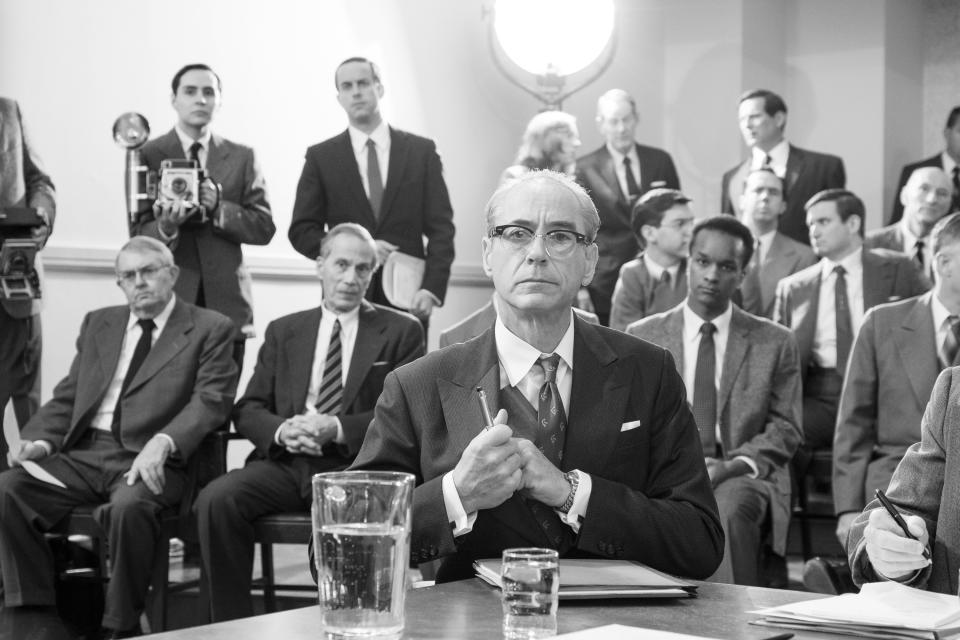How to Release an Oscar-Winning Movie

Now that the Oscar winners are known, we can determine the other winners: the studios’ and distributors’ strategic release decisions that impacted results.
Some may reflect genius or gut instinct; others are timing and preparation creating luck. In each case, distribution (or the lack thereof) played a significant role in positioning the films for success — but none of them could be considered a template.
More from IndieWire
Surprisingly, the universal non-factor appeared to be SAG strike, which constrained promotion. “Oppenheimer” completed most cast appearances in time, while “Killers of the Flower Moon” had press stockpiled from Cannes. The French “Anatomy of a Fall” was unaffected.
“The Holdovers,” along with “Priscilla,” took the biggest chances with their October releases. Both made platform debuts on the same day. Sofia Coppola’s biopic showed a faster response, but Alexander Payne’s film found awards success (as well as a near-equal box office haul and bigger home response).
Focus gambled by sticking to its “Holdovers” date, but it also meant opening against less competition. Post-strike, there was enough time to provide interviews that lead into peak pre-nomination timing.
Here’s a look at five Oscar-nominated films and the factor that made the difference.

“Oppenheimer”: Summer release
It’s entirely possible that Christopher Nolan’s film could have opened any time last year and done as well. However, Universal chose July and made it three years running that the Best Picture winner dodged the traditional fall awards corridor. The last time we saw that trend was 1953-1955 with “From Here to Eternity,” “On the Waterfront,” and “Marty” — back when top films could take months to reach some cities.
Aiding that timing (atypically, the same day as the even bigger “Barbie”) was its status as a non-franchise, non-sequel film in a year that had already seen a series of big-budget disappointments. It felt like the perfect film at the right time and its success ($330 million domestic, $959 million worldwide), elevated by summer playtime, further boosted its chances.
Back in 2019, Universal went a more conventional route with Sam Mendes’ “1917.” It platformed in December and rolled out wide in January to #1, earning $37 million on the weekend before nomination announcements. It was viewed as the lead for Best Picture and while it won three of its 10 nominations, “Parasite” took the prize.
Although July has been Nolan’s favored release month, it holds no specific Oscar magic. Other July titles include 2020’s “Tenet” (two nominations, one win), 2017’s “Dunkirk” (eight nominations, three wins), and 2012’s “The Dark Knight Rises” (no nominations).

“Poor Things”: “Magazine Dreams”
After the strong response to “Magazine Dreams” at Sundance, particularly for star Jonathan Majors, Searchlight slotted the title for its prime December initial release date. When the actor’s legal issues intervened, they dropped the date and later the film. Enter: “Poor Things.”
Originally dated for September 8, shortly after its premieres at the Telluride and Venice festivals, it suggested uncertainty as to how members might react to Yorgos Lanthimos’ envelope-pushing film. But after rave reviews and the liberation of the December date, it became the best of the year-end platform openers and became his biggest box-office success … all during the nomination and voting periods.

“Killers of the Flower Moon”: It wasn’t the release
Apple Studios and Paramount Pictures’ “Killers of the Flower Moon” became Martin Scorsese’s third film to receive 10 nominations and no wins, joining 2002’s “Gangs of New York” (Miramax) and 2019’s “The Irishman” (Netflix).
Conventional wisdom holds that Netflix hurts its Oscar chances with limited theatrical play. However, Apple and Paramount gave “Killers” the full-court theatrical press … and were blanked for their efforts. It’s possible that the October/SAG strike timing could have been better, or perhaps nothing could have stopped Emma Stone’s final momentum.
Netflix films also suffered this year, with 19 nominations and only one win for Wes Anderson’s live-action short “The Wonderful Story of Henry Sugar.” With limited theatrical availability, “Maestro” received eight nominations. Would acting nominees from “Nyad” and “Rustin” fared better wiht a conventional release? Neither earned the reviews to guarantee theatrical reaction.

“Godzilla Minus One” and “The Boy and the Heron”: Embraced December
December used to be a premium period for theatrical, but it’s increasingly abandoned as specialized releases can’t hold on through the year’s end before moving onto lucrative PVOD platforms. That became opportunity for Toho’s “Godzilla Minus One,” which grossed $56 million, and Hayao Miyazaki’s “The Boy and the Heron” (GKIDS), which grossed $46 million. Each also won their Oscar nominations for Visual Effects and Animated Feature, respectively.
Timing their releases in early December, when theaters otherwise had little show, also created ideal positioning for an Oscar campaign. After strong wide debuts for each, both played through the holidays and into the new year.
It’s impossible to know if earlier releases would have hurt their chances, but it’s hard to imagine they could have done better with the dates they had.
Best of IndieWire
The Best LGBTQ Movies and TV Shows Streaming on Netflix Right Now
Guillermo del Toro's Favorite Movies: 54 Films the Director Wants You to See
Nicolas Winding Refn's Favorite Films: 37 Movies the Director Wants You to See
Sign up for Indiewire's Newsletter. For the latest news, follow us on Facebook, Twitter, and Instagram.

 Yahoo News
Yahoo News 
